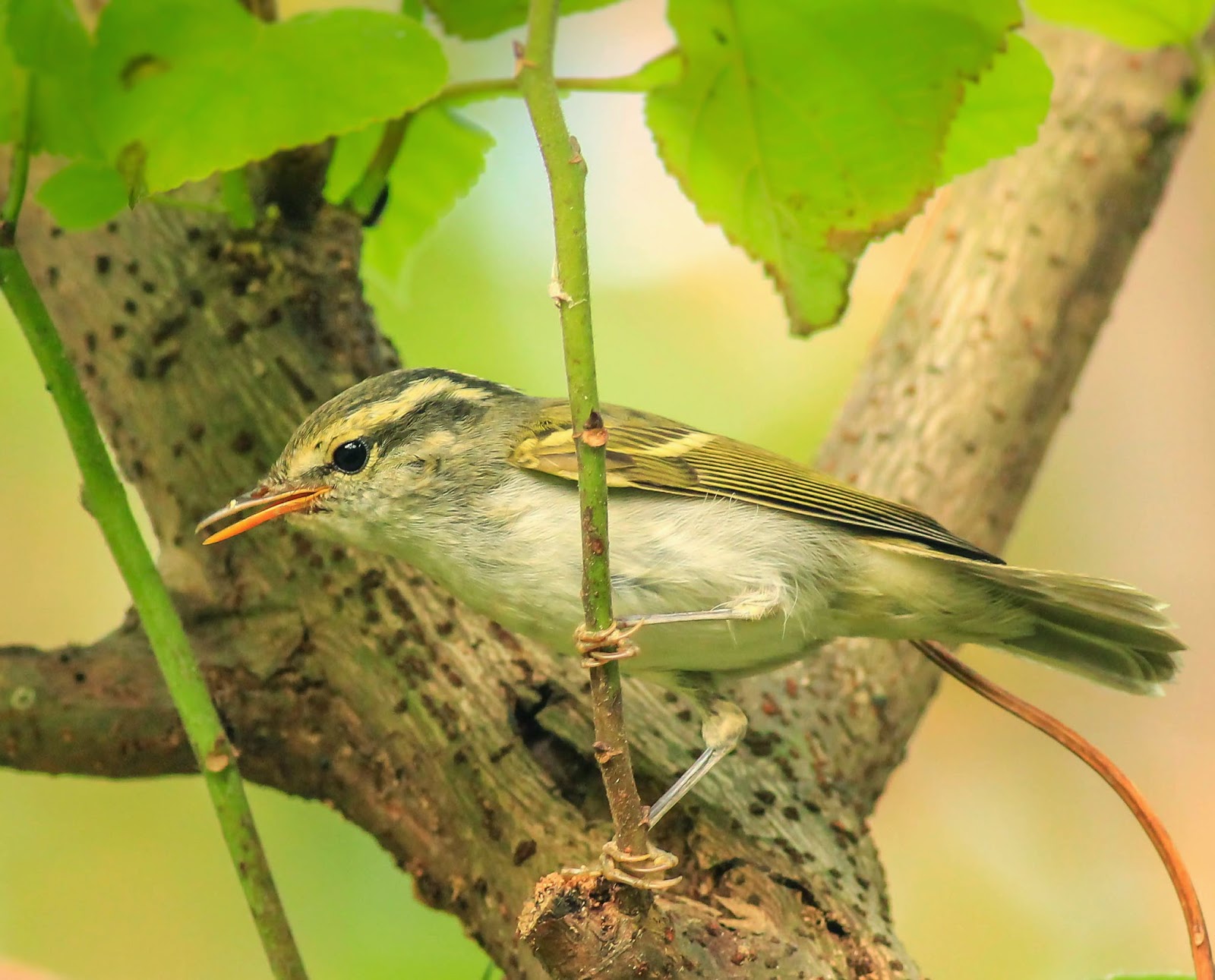I have grabbed a couple of brief opportunities to get out in the last few days.
At the Botanical Gardens good sightings of Thrushes with Orange-headed
T., Blue-Whistling T. and White-throated Rock T.
Spotted also there all the usual suspects
including 4 species of Flycatchers, 2 species of Drongos
(Ashy, Spangled), 5 species of Phylloscopus..., + 2 species of
Flowerpeckers (Fire-breasted and Scarlet-backed, the first one considered as a good bird
for the city). Fire-breasted F. is
assumed to be a sub-montane and montane forest resident, although there is
evidence that some short-distance movements take place in some areas during the
non-breeding season. This is the second or third time I bump into this species at Hanoi.
But the highlight was a Wedge-tailed Green
Pigeon, my first Green Pigeon in the city! Unfortunately it was perched very high in a fig tree and I only got some poor shots.
Blue Whistling-thrush of the black-billed migratory race caeruleus
female White-throated Rock Thrush
Uncommon but regular passage migrant in the city. But this is my first sighting on autumn passage.
male Orange-headed Thrush
Ashy Drongo
Eastern Crowned Warbler
Japanese White-eye
Record shot of the Wedge-tailed Green Pigeon feeding in the canopy of a fig tree.
According to literature, this species is generally resident but with local nomadic or altitudinal migratory movement, which may explain its presence in this city park. A caged escapee or released bird can't be ruled out, but very improbable.
According to literature, this species is generally resident but with local nomadic or altitudinal migratory movement, which may explain its presence in this city park. A caged escapee or released bird can't be ruled out, but very improbable.








.jpg)
.jpg)









































